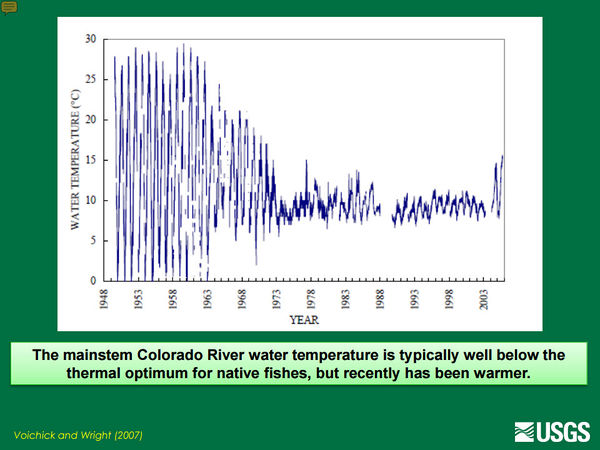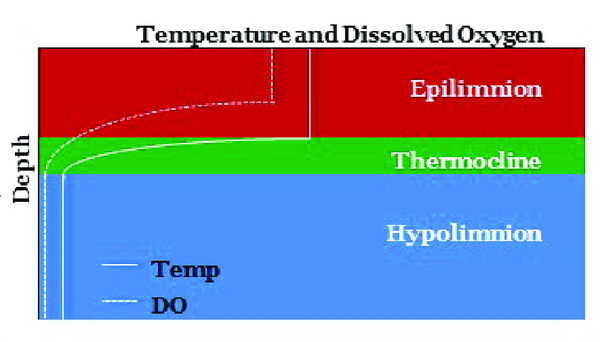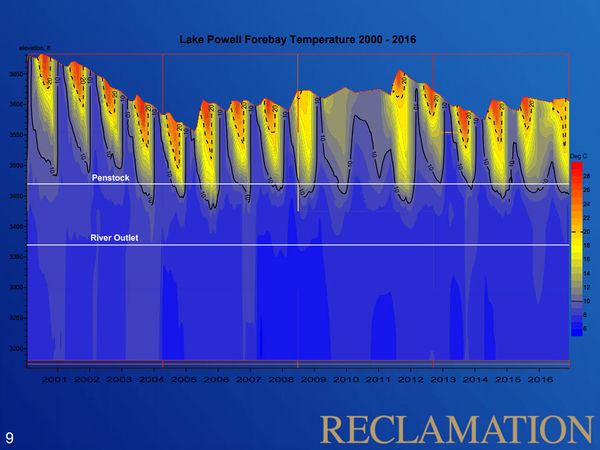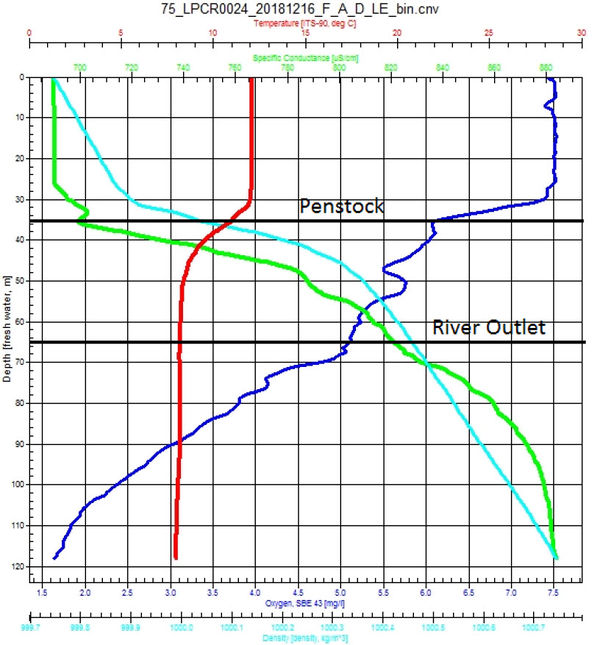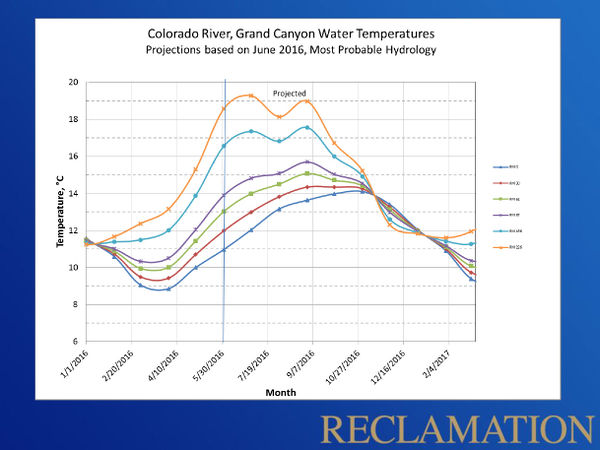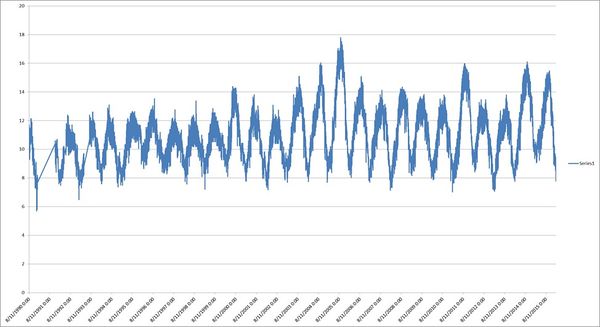Difference between revisions of "TEMPERATURE"
Cellsworth (Talk | contribs) |
Cellsworth (Talk | contribs) |
||
| (9 intermediate revisions by the same user not shown) | |||
| Line 95: | Line 95: | ||
*[http://gcdamp.com/index.php?title=GCDAMP_Temperature_Learning_Page Temperature Learning Page] | *[http://gcdamp.com/index.php?title=GCDAMP_Temperature_Learning_Page Temperature Learning Page] | ||
*[http://gcdamp.com/index.php?title=TCD_Learning_Page TCD Learning Page] | *[http://gcdamp.com/index.php?title=TCD_Learning_Page TCD Learning Page] | ||
| + | *[http://gcdamp.com/index.php?title=Nonnative_Invasive_Aquatic_Species Nonnative Fish Page] | ||
*[http://gcdamp.com/index.php?title=Bioenergetics_Studies Bioenergetics Page] | *[http://gcdamp.com/index.php?title=Bioenergetics_Studies Bioenergetics Page] | ||
*[[Near Shore Ecology (NSE) Study]] of the fall steady flow test | *[[Near Shore Ecology (NSE) Study]] of the fall steady flow test | ||
| Line 104: | Line 105: | ||
|style="color:#000;"| | |style="color:#000;"| | ||
| + | *[https://tableau.usgs.gov/views/colorado-river-water-quality-gcd/GlenCanyonDamSiteHourlyAverages?%3Aembed=y&%3AisGuestRedirectFromVizportal=y Glen Canyon Dam Site: Hourly Averages] | ||
*[https://www.gcmrc.gov/discharge_qw_sediment/station/GCDAMP/09379901 Glen Canyon Dam near Page, AZ] | *[https://www.gcmrc.gov/discharge_qw_sediment/station/GCDAMP/09379901 Glen Canyon Dam near Page, AZ] | ||
*[https://www.gcmrc.gov/discharge_qw_sediment/station/GCDAMP/09382000 Paria River at Lees Ferry, AZ] | *[https://www.gcmrc.gov/discharge_qw_sediment/station/GCDAMP/09382000 Paria River at Lees Ferry, AZ] | ||
| Line 124: | Line 126: | ||
|- | |- | ||
|style="color:#000;"| | |style="color:#000;"| | ||
| + | |||
| + | '''2022''' | ||
| + | *[https://www.paysonroundup.com/news/arizona_state/low-water-levels-at-lake-powell-impact-the-fish-downstream/article_9cff5e91-04e0-5147-9a3d-8eccbbb496b5.html?utm_medium=social&utm_source=email&utm_campaign=user-share Low water levels at Lake Powell impact the fish downstream] | ||
| + | *[https://www.usbr.gov/uc/progact/amp/amwg/2022-02-10-amwg-meeting/20220210-FY2022DroughtFundingInfrastructureAlternatives-508-UCRO.pdf FY 2022 Drought Funding: Infrastructure Alternatives ] | ||
| + | *[https://www.usbr.gov/uc/progact/amp/twg/2022-01-13-twg-meeting/20220113-TWGMeeting-BasinHydrologyOperationsWaterQuality-508-UCRO.pdf Basin Hydrology, Operations and Water Quality ] | ||
| + | |||
| + | '''2021''' | ||
| + | *[https://www.usbr.gov/uc/progact/amp/twg/2021-10-14-twg-meeting/20211014-GlenCanyonDamReleaseTemperatures-Presentation-508-UCRO.pdf Glen Canyon Dam Release Temperatures] | ||
| + | *[https://www.usbr.gov/uc/progact/amp/twg/2021-06-17-twg-meeting/20210617-TemperatureControlFishPassageGlenCanyonDam%E2%80%93RecentProgress-508-UCRO.pdf Temperature Control and Fish Passage at Glen Canyon Dam – Recent Progress ] | ||
| + | |||
| + | '''2020''' | ||
| + | *[https://agupubs.onlinelibrary.wiley.com/doi/10.1029/2020WR027566 Mihalevich eta al, 2020, Water temperature controls for regulated canyon‐bound rivers: Water Resources Research] | ||
| + | *[https://www.usbr.gov/uc/progact/amp/amwg/2020-02-12-amwg-meeting/20200212-GCMRC2020AnnualReportingMeeting-PresentationPart2b-508-UCRO.pdf GCMRC 2019 Annual Reporting Meeting Overview – Part 2b ] | ||
| + | *[https://www.usbr.gov/uc/progact/amp/twg/2020-01-13-twg-meeting/20200113-AnnualReportingMeeting-PotentialImplicationsWarmerFutureColoradoRiverEcosystem-508-UCRO.pdf Potential implications of a warmer future for the Colorado River ecosystem ] | ||
'''2018''' | '''2018''' | ||
Latest revision as of 10:44, 10 August 2023
|
|
Water Temperature below Glen Canyon DamPrior to completion of Glen Canyon Dam in 1963, the temperature of water flowing through the Grand Canyon each year was highly variable, ranging from the icy, spring run-off to the warm, 85-degree summer-heated flows. However, once the dam was constructed, the temperature of the water released from the dam - drawn from the depths of Lake Powell and released through the dam's penstock intakes - ranged for many years between 45 and 50 F (7 to 10 C). With the lowering of Lake Powell, release temperatures have been increased to as high as 59 F (15 C) which has likely led to an increase in the humpback chub and other native fish populations in Grand Canyon. These increases in temperature, however, also increase the risk of expanding the distribution and abundance of cool/warm-water nonnative fish like brown trout, green sunfish, smallmouth bass, and walleye which could have a devastating impact on the humpback chub population in Grand Canyon like they have on humpback chub and other native fish populations in the Upper Basin. |
| --- |
--- |
--- |
|---|
